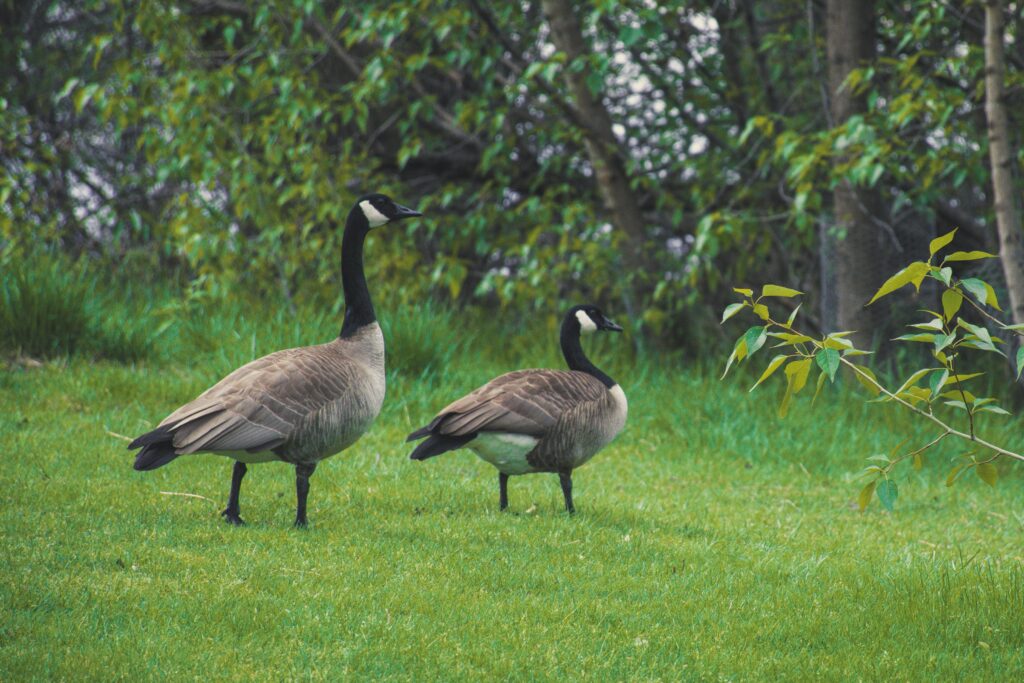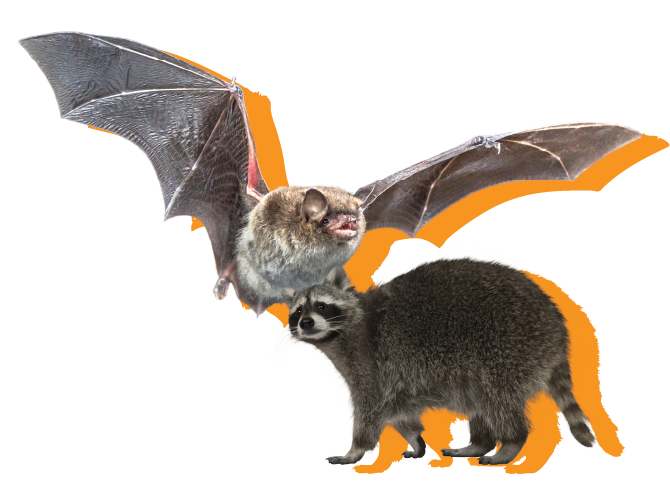Table of Contents
- Key Points
- Why Bird Removal Is Necessary
- Identifying the Culprit: Common Bird Species in Greenville
- Legal Considerations for Bird Removal
- Humane Bird Removal Methods
- DIY Bird Prevention Remedies
- How Much Does Bird Removal Cost?
- Find Bird Removal Near Me
- References
Key Points
Birds play a vital role in ecosystems, contributing to pest control, seed dispersal, and pollination.1 However, when birds become a nuisance by nesting in problematic areas or causing property damage, removal becomes necessary.
There are a lot of things to consider when attempting to address birds that have infiltrated your home or business. As someone who has worked in bird removal for many years, we know that approaches to the problem are many and varied, and the right solution is different for every set of circumstances.
Fortunately, there are some basic strategies that apply to almost every bird issue. We have put together some information below that explains why bird removal is so important and how to do it effectively without violating any laws. Keep reading for bird removal strategies, humane approaches, and legal considerations to address bird-related issues responsibly.
Why Bird Removal Is Necessary
Birds can create challenges for homeowners and property managers when they nest or roost in inconvenient locations. Common issues related to this can include:
- Blocked Ventilation: Nests in chimneys, air ducts, or dryer vents can obstruct airflow, leading to fire hazards and decreased appliance efficiency.
- Structural Damage: Nesting materials combined with trapped water can accelerate the deterioration of roofs, gutters, and eaves.
- Health Risks: Bird droppings carry bacteria and diseases like histoplasmosis.2 Accumulated droppings near nests can also stain surfaces and emit foul odors.
- Aggressive Behavior: Some birds become territorial during nesting season, posing risks to children and pets.
- Attracting Pests: Bird nests often harbor mites, fleas, and rodents, creating secondary infestations.
Why Birds Become a Problem in Greenville
Before diving into removal methods, it is crucial to understand why your property gets on birds’ radars in the first place. Common attractants can include:
- Food Sources: Bird feeders, pet food left outdoors, open garbage cans, and fruit-bearing trees provide readily available meals.
- Shelter: Eaves, gutters, chimneys, and dense vegetation offer ideal nesting and roosting spots.
- Water: Bird baths, ponds, and even leaky faucets can attract birds seeking hydration.
- Ideal Nesting Locations: The structure of homes and buildings in Greenville—from older homes with many nooks and crannies to newer commercial buildings—offers many places for birds to nest.
Identifying the Culprit: Common Bird Species in Greenville
To effectively remove birds you need to know which ones you are dealing with. There are hundreds of distinct species in South Carolina,3 but only a handful are nuisance offenders in the Upstate:

- Pigeons: These adaptable birds thrive in urban environments, often nesting on rooftops and ledges. They are known for their droppings, which can damage property and pose health risks.
- Starlings: These invasive birds are highly social and can form large flocks, causing significant damage to crops and gardens. They also tend to nest in holes and crevices.
- House Sparrows: Similar to starlings, house sparrows are aggressive and compete with native bird species for resources. They often build nests in building cavities and under eaves.
- Woodpeckers: While woodpeckers play an important role in the ecosystem, they can cause significant damage to wooden structures by drilling holes in search of insects or to create nesting cavities.
- Geese: While beautiful to observe in parks, Canada geese can become a nuisance on private property, especially near ponds and lakes. Their droppings can be prolific, and aggressive behavior can be a threat.
If you are uncertain about the species, an experience wildlife removal services can help you identify it using the nest, eggs, and/or other physical conditions.
Legal Considerations for Bird Removal
Bird removal is governed by laws designed to protect wildlife populations. For instance, the federal Migratory Bird Treaty Act (MBTA) prohibits killing, capturing, selling, trading, and transporting protected migratory bird species without prior authorization by the U.S. Fish and Wildlife Service.4 There are also exceptions to these laws, such as non-native species like house sparrows, European starlings, and pigeons.
Under South Carolina law (Section 50-11-840), it is illegal to take, destroy, or possess an active nest or eggs of wild birds without a permit. An “active nest” is defined as one containing birds or eggs.5
It can be difficult for everyday home or business owners to determine whether a species—including nests and eggs—is protected, requiring special removal techniques. For this reason alone, it is always wise to consult a local wildlife removal service before taking action, to ensure you are in compliance with all federal and state regulations.
Humane Bird Removal Methods
Regardless of the circumstances, there are a few key steps in removing birds humanely.
Preparation
The first phase involves assessing nest activity—namely determining if it is active or inactive. Again, active nests are usually protected by federal laws.
Next, it is important to identify the species. This will confirm whether it is protected under the MBTA.
The final assessment involves looking at the necessity for removal. This includes evaluating any safety and structural concerns with the removal process.
Bird Removal
There are different methods that professional pest removal services use. The main one involves live trapping. Professionals use specially designed traps that fit in small spaces and do not harm the birds. This lets them capture the animals and relocate them to a suitable environment.
Preventive Measures
A major aspect of bird removal involves deterring the animals from returning and preventing other birds from accessing the same space. There are many different ways to accomplish this.
Physical Barriers: Bird spikes are needle-like metal or plastic rods on ledges and windowsills to deter roosting. Bird netting can be used to cover semi-enclosed spaces like gardens or balconies. Netting prevents entry while allowing sunlight and airflow.
Visual Deterrents: Reflective objects can create an unwelcoming environment for birds by reflecting light, keeping them out of the area. Predator decoys shaped like owls or hawks will scare birds away, although it is important to occasionally move these decoys to prevent birds from becoming accustomed to them. Laser systems can create patterns that keep birds away, day and night.
Auditory Repellents: Ultrasonic devices that emit distress calls or predator sounds instill fear in birds without disturbing humans.
Non-Toxic Repellents: These are biodegradable sprays that deter birds. You can spray these nontoxic formulas on grass or foliage to discourage feeding.
DIY Bird Prevention Remedies
While bird removal should be left up to the pros, there are a few things homeowners can do to deter them and prevent the reoccurance of infestations. Placing reflective items on the property can help. For instance, colorful, shiny “gazing” balls or similar decorations are good for gardens.
A mixture of chili powder and vinegar can be a cheap and useful deterrent to birds. Spray it around spaces that might attract birds for nesting.
Finally, it is important to avoid lethal traps or harmful chemicals that pose a threat to other living things in the ecosystem. If natural DIY deterrents aimed at encouraging birds to relocate do not work, it is time to call in the professionals. They can quickly address existing problems and provide solutions for future deterrence.
How Much Does Bird Removal Cost?
Bird removal costs will vary depending on location, as well as the scope and complexity of the project. You can expect straightforward removals to cost between $150 and $300, while major infestations may be closer to $750.
Another variable that could impact the cost of bird removal is if the removal service is dealing with a protected species. Also, if you are adding on services, such as prevention protocols, that could add to the cost. Keep in mind that ongoing bird removal services may be bundled with other pest control measures.
Find Bird Removal Near Me
Bird removal requires a balance between protecting property and respecting wildlife. By understanding legal regulations, employing humane strategies, and taking preventive measures, you can mitigate bird-related challenges effectively.
At Precision, we offer a wide range of pest control services, including wild bird removal and prevention. Our experienced technicians can help you quickly and effectively address your bird problems or other pest issues. Contact us today to learn more or to schedule service.
References
- Ashish Kumar Arya, Archana Bachheti, Vinaya Kumar Sethi, Kamal Kant Joshi, “Birds and Environment: A Multidisciplinary Approach to Ecological, Behavioural and Conservation Issues,” BMC Zoology, April 2024, https://pmc.ncbi.nlm.nih.gov/articles/PMC11056042/.
- Marie A de Perio, Kaitlin Benedict, Samantha L Williams, et al., “Occupational Histoplasmosis: Epidemiology and Prevention Measures,” Journal of Fungi, June 2021, https://pmc.ncbi.nlm.nih.gov/articles/PMC8306883/.
- “Official List of the Birds of South Carolina,” Carolina Bird Club, Retrieved on April 24, 2025, from: https://www.carolinabirdclub.org/brc/checklist_of_South_Carolina_birds.html.
- “Migratory Bird Treaty Act of 1918,” 16 U.S.C. 703-712, U.S. Fish & Wildlife Service, https://www.fws.gov/law/migratory-bird-treaty-act-1918.
- “Destroying active wild bird nest or eggs; permit for removal,” 2024 South Carolina Code of Laws, Title 50 – Fish, Game and Watercraft, Chapter 11 – Protection Of Game, Section 50-11-840 (2024), https://law.justia.com/codes/south-carolina/title-50/chapter-11/section-50-11-840/.


